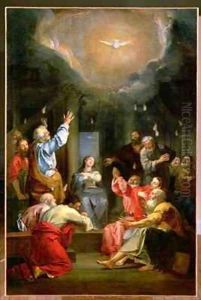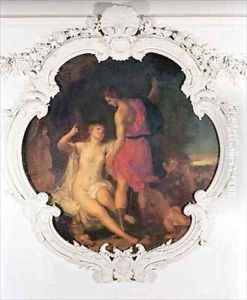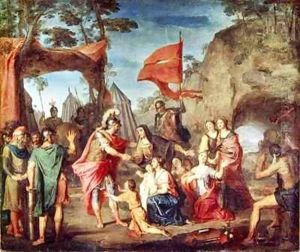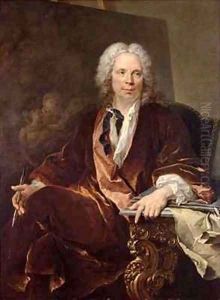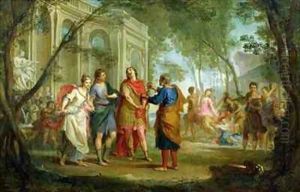Louis M. Tocque Paintings
Louis-Michel Tocqué was a French painter born on October 19, 1696, in Paris. He is renowned for his portraits that encapsulate the elegance and formality of the French Rococo period. Tocqué was the son of the painter Michel Tocqué, which provided him an early exposure to the world of art and painting. Under the guidance of his father and later his father-in-law, the respected portraitist Nicolas de Largillierre, Tocqué honed his skill in portraying the nuances of character and the opulence of his subjects' attire.
Tocqué's career was marked by his ability to capture the refinement and sophistication of the French aristocracy and intellectual elite. He was adept at painting both in the Grand Manner, favoring a more formal and idealized approach, and in a more intimate and candid style. His portraits are characterized by their rich detail, subtle color palettes, and the lifelike representation of fabrics and textures. Tocqué’s clientele included royalty, nobility, and prominent figures of the day, underscoring his reputation as a portraitist who could convey both the likeness and the status of his sitters.
In 1737, Tocqué was received into the Académie Royale de Peinture et de Sculpture, solidifying his position within the French artistic hierarchy. His marriage to Marie-Nicole Horthemels, a member of a family of engravers, provided further connections to the art world and patronage circles. Throughout his career, Tocqué exhibited at the Paris Salon, where his work received considerable acclaim.
Tocqué's influence extended beyond France. He was invited to the Russian court of Empress Elizabeth, where he completed portraits of the Empress and other members of the court. His time in Russia helped spread his reputation and influence, and he became a link between the French and Russian art worlds during the 18th century.
Louis-Michel Tocqué died on February 10, 1772, in Paris. His legacy is preserved in the collections of some of the world's most prestigious museums, including the Louvre in Paris and the Hermitage Museum in Saint Petersburg. His works continue to be celebrated for their technical mastery and their portrayal of the grandeur of the Rococo period.
